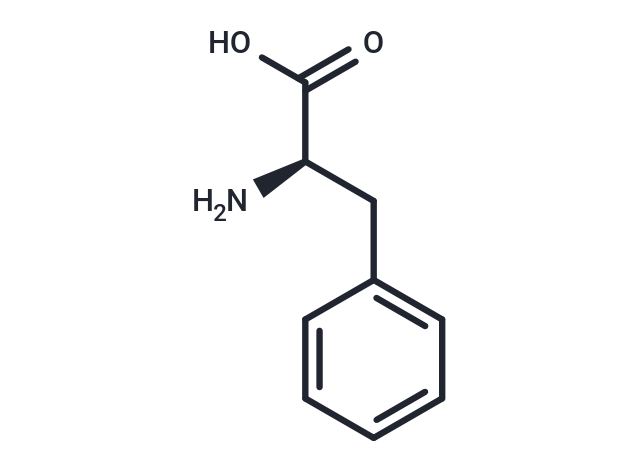Shopping Cart
- Remove All
 Your shopping cart is currently empty
Your shopping cart is currently empty

D-Phenylalanine, a necessary aromatic amino acid, is a precursor of thyroxine, dopamine, melanin, and noradrenaline (norepinephrine).

| Pack Size | Price | Availability | Quantity |
|---|---|---|---|
| 200 mg | $31 | In Stock | |
| 500 mg | $48 | In Stock | |
| 1 g | $70 | In Stock | |
| 1 mL x 10 mM (in H2O) | $39 | In Stock |
| Description | D-Phenylalanine, a necessary aromatic amino acid, is a precursor of thyroxine, dopamine, melanin, and noradrenaline (norepinephrine). |
| In vitro | Aspirin (oral administration of 200 mg/kg) co-administered with D-phenylalanine (oral administration of 500 mg/kg) rather than with sodium zomepirac (oral administration of 200 mg/kg) resulted in a statistically significant minor increase in the aversion threshold. The oral administration of 500 mg/kg D-Phenylalanine alone caused a minor, statistically insignificant increase in the aversion threshold that was not reversed by naloxone. |
| In vivo | D-Phenylalanine binds to carboxypeptidase A by disrupting the functional active site at Glu-270 and the hydrogen bonds between zinc-bound water molecules, facilitating the displacement of metal-bound water anions. |
| Molecular Weight | 165.19 |
| Formula | C9H11NO2 |
| Cas No. | 673-06-3 |
| Smiles | N[C@H](Cc1ccccc1)C(O)=O |
| Relative Density. | 1.1603 g/cm3 (Estimated) |
| Storage | Powder: -20°C for 3 years | In solvent: -80°C for 1 year | Shipping with blue ice/Shipping at ambient temperature. | ||||||||||||||||||||
| Solubility Information | DMSO: Insoluble H2O: 10 mM, Sonication is recommended. | ||||||||||||||||||||
Solution Preparation Table | |||||||||||||||||||||
H2O
| |||||||||||||||||||||

Copyright © 2015-2025 TargetMol Chemicals Inc. All Rights Reserved.